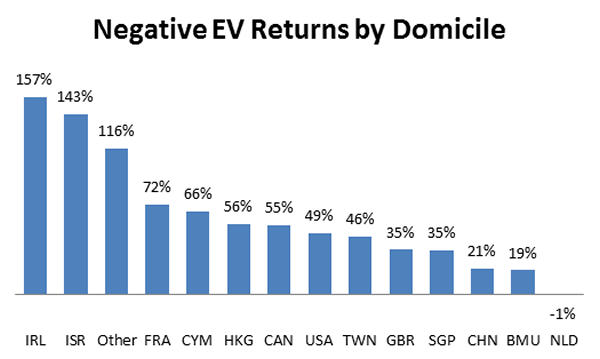Содержание

For accrued revenues, the journal entry would involve a credit to the revenue account and a debit to the accounts receivable account. This has the effect of increasing the company’s revenue and accounts receivable on its financial statements. On the other hand, if the company has incurred expenses but has not yet paid them, it would make a journal entry to record the expenses as an accrual. This would involve debiting the “expenses” account on the income statement and crediting the “accounts payable” account.
In most cases, the employee has a right to receive a 13th cheque or a performance based bonus as per the employment contract. A provision on the other hand should be recognised if the above conditions for a liability are met, but there is uncertainty regarding the timing or amount of the liability. The subject of this discussion is when to recognise an accrual for bonuses and when a provision.
It holds specific meanings in accounting, where it can refer to accounts on a balance sheet that represent liabilities and non-cash-based assets used in accrual-based accounting. The utility company generated electricity that customers received in December. However, the utility company does not bill the electric customers until the following month when the meters have been read. To have the proper revenue figure for the year on the utility’s financial statements, the company needs to complete an adjusting journal entry to report the revenue that was earned in December.
It will additionally be reflected in the receivables account as of December 31, because the utility company has fulfilled its obligations to its customers in earning the revenue at that point. The adjusting journal entry for December would include a debit to accounts receivable and a credit to a revenue account. The following month, when the cash is received, the company would record a credit to decrease accounts receivable and a debit to increase cash. The use of accrual accounts greatly improves the quality of information on financial statements. Unfortunately, cash transactions don’t give information about other important business activities, such as revenue based on credit extended to customers or a company’s future liabilities. By recording accruals, a company can measure what it owes in the short-term and also what cash revenue it expects to receive.
Educational material on applying IFRSs to climate-related matters
For accrued expenses, the journal entry would involve a debit to the expense account and a credit to the accounts payable account. This has the effect of increasing the company’s expenses and accounts payable on its financial statements. Another example of an expense accrual involves employee bonuses that were earned in 2019, but will not be paid until 2020. The 2019 financial statements need to reflect the bonus expense earned by employees in 2019 as well as the bonus liability the company plans to pay out.

Reversing entries may be set to automatically reverse in a future period, thereby eliminating this threat. An adjusting journal entry occurs at the end of a reporting period to record any unrecognized income or expenses for the period. Accrued interest refers to the interest that has been earned on an investment or a loan, but has not yet been paid. For example, if a company has a savings account that earns interest, the interest that has been earned but not yet paid would be recorded as an accrual on the company’s financial statements.
What Are Accruals? How Accrual Accounting Works, With Examples
Banks make loans to borrowers, which come with a risk that the loan will not be paid back. Loan loss provisions work similarly to the provisions that corporations make, in that banks set aside a loan loss provision as an expense. Loan loss provisions cover loans that have not been paid back or when monthly loan payments have not been met. There are general guidelines that should be met before a provision can be justified in the financial statement. The entity must have an obligation at the reporting date; that is, the present obligation must exist.

In connection with these accounts, there is a transparent condition of amount and maturity. The onset of IFRS challenged us, as accountants, to embrace the concept of impairment as something that applies to all assets—all perhaps with the exception of cash. Impairment is now a concept intimately and definitively attached to almost every asset measured at cost or depreciated/amortized cost. Before IFRS, this concept was limited almost exclusively to trade accounts receivable and obsolete or slow-moving inventories. The terms allowance for doubtful accounts and provision for obsolete inventories have been in our vocabularies for decades—at least those of us trained in the days before IFRS was born. Otherwise, inattention by the accounting staff could depart these changes on the books in perpetuity, which may cause future financial statements to be incorrect.
Expert Assisted Services
The main difference between the two is that accrued income and expenses are those that are yet to be paid or received, and prepaid income or expenses are those that have been paid or received in advance. At the end of the accounting term, the company assess the status of their accruals and prepayments and make entries to adjust the income that was earned and expenses that were incurred. The purpose of accruals is to ensure that a company’s financial statements accurately reflect its true financial position. This is important because financial statements are used by a wide range of stakeholders, including investors, creditors, and regulators, to evaluate the financial health and performance of a company. Without accruals, a company’s financial statements would only reflect the cash inflows and outflows, rather than the true state of its revenues, expenses, assets, and liabilities.
Accruals, on the other hand, can be for either expenses or revenues, whereas provisions are always for expenses. An accrued expense is an expense incurred, but currently not recorded in the account books. To reflect this in the financial statements, it will require an adjustment entry in the account books. If a enterprise data its transactions underneath the money basis of accounting, then it doesn’t use accruals. Instead, it data transactions solely when it either pays out or receives cash. The money basis yields monetary statements which are noticeably totally different from those created beneath the accrual basis, since timing delays within the move of cash can alter reported outcomes.
Accruals are revenues earned or expenses incurred which impact a company’s net income, although cash has not yet exchanged hands. Companies elect to make them for future obligations whose specific amount or date of incurrence is unknown. The provisions basically act like a hedge against possible losses that would impact business operations. A provision is measured at the amount that the entity would rationally pay to settle the obligation at the end of the reporting period or to transfer it to a third party at that time. Accrual is income earned but not received or expenses incurred but not spent. Provision is making provision from the profit for a specified or known expense which is to be met in unknown future.

A widespread accrued revenue state of affairs is interest that has been earned however not yet obtained. The journal entry is to debit or enhance interest receivable, an asset account, and to credit score or improve curiosity income, which is reported in the income statement. For example, an organization with a bond will accrue curiosity expense on its month-to-month financial statements, although curiosity on bonds is often paid semi-annually.
Both accruals and provisions are equally important, and the accountant must ensure that they are accurately recorded. Due to the subtle differences between the concepts, they are easily confused and misunderstood. The following article will highlight the difference between them and explain what they actually portray in the financial statements of a firm. As most of these large companies are listed entities, they have the obligation to declare their financial position every quarter, as accurately as possible. In every quarterly result, they record the revenue, the profit generated, the gross profit margin, their assets and liabilities, etc.
Why is it Necessary to Apply the Accrual Principle?
Accruals refer to the recognition of expense and revenue have been incurred and not yet paid. A provision, on the other hand, are quite uncertain for any business but are not totally uncertain hence the provision is made by businesses to hedge any future potential losses in the business. Whether an accrual is a debit or a credit depends on the type of accrual and the effect it has on the company’s financial statements. Revenues either paid or not received at the end of the accounting period while Provision is an estimated amount which is created to avoid loss to the business in nearer future. Provisions include accounting for probable losses such as provision for doubtful debts, provision for impairment of assets etc. Accruals include accounting for several expenses such as purchase of materials, payment of utility expenses such as rent, electricity, professional fees etc.
Once the https://1investing.in/ has been made in the new year, the liability account will be decreased through a debit, and the cash account will be reduced through a credit. Accruals include accrued expenses and accrued income whereas prepayments include prepaid income and prepaid expenses. The recording of accruals and prepayments ensure that accounting data is recorded as and when the incomes or expenses are made known, instead of waiting for the funds to actually exchange hands.
- This ensures that the company’s financial statements accurately reflect its true financial position, even if it has not yet received payment for all of the services it has provided.
- Accruals are made for both receipts and payments, whereas provisions are made only for expected future expenses.
- Revenue is the amount of money that a business can earn in its normal course of business by selling its goods and services.
- The IFRS Foundation is a not-for-profit, public interest organisation established to develop high-quality, understandable, enforceable and globally accepted accounting and sustainability disclosure standards.
We now supply eight Certificates of Achievement for Introductory Accounting and Bookkeeping. The certificates include Debits and Credits, Adjusting Entries, Financial Statements, Balance Sheet, Income Statement, Cash Flow Statement, Working Capital and Liquidity, and Payroll Accounting. An example of an expense accrual entails employee bonuses that had been earned in 2019, but won’t be paid till 2020.
In a publicly listed corporation’s difference between provision and accruals statement, there is an accrued expense for the interest that is paid to bondholders each quarter. Provision for bad debts is another example in which a company provides loans and materials to other entities. The company estimates that it will not receive all the money due to potential defaults on the loan, so it sets aside five to 10 percent of the amount to provide for unpaid debts. The objective of accruals is to report the correct numbers of revenue and expense for that period and forecast certain receivables and payables. In contrast, provision aims to protect the business from a heavy cash outflow in the future and make provision for any un-probable event. If that’s the case, an accrual-type adjusting entry should be made to ensure that the monetary statements to report the revenues and the related receivables.
Example –M/s XYZ has purchased raw material for his factory for M/s ABC on 1 January 2020. The raw materials have been received by the factory against which M/s ABC has raised a bill for USD 1,000 on M/s XYZ. M/s XYZ has a credit period of 30 days to make payment for the raw materials purchased. Examples of Provisioning include Guarantees, Deferred tax, Restructuring liabilities, Depreciation, Sales allowances, etc.
Record profit for SBI in straight qtr Mint – Mint
Record profit for SBI in straight qtr Mint.
Posted: Fri, 03 Feb 2023 08:00:00 GMT [source]
Accruals make up of those which are to be paid such as wages due at the end of the month and receivables such as funds to be received by debtors. Accrued income is revenue received but not actually reported in the account books. In this case, too, an adjustment entry will be required, similar to the accrued expenses. Some examples of accruals may include receivables, accounts payable, accrued rent, and so on. Using the accrual method, an accountant makes changes for revenue that has been earned but isn’t yet recorded in the basic ledger and bills that have been incurred but are additionally not but recorded.
Accounts Payable
Financial ReportingFinancial reporting is a systematic process of recording and representing a company’s financial data. The reports reflect a firm’s financial health and performance in a given period. Management, investors, shareholders, financiers, government, and regulatory agencies rely on financial reports for decision-making. RevenueRevenue is the amount of money that a business can earn in its normal course of business by selling its goods and services. In the case of the federal government, it refers to the total amount of income generated from taxes, which remains unfiltered from any deductions.








Scrivi un commento